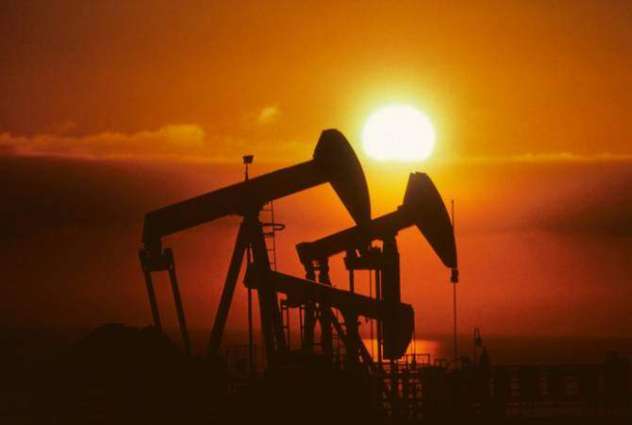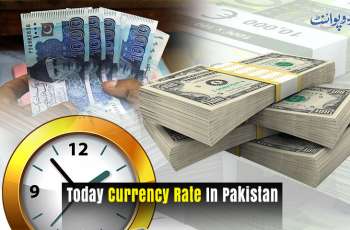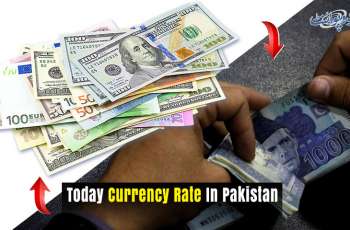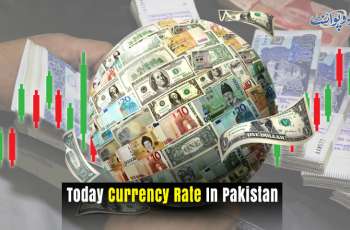Oil prices fell 4% on Tuesday on fears that the US labor market might have had another rip-roaring month that could trigger another rate hike by the Federal Reserve
NEW YORK (Pakistan Point News / Sputnik - 31st May, 2023) Oil prices fell 4% on Tuesday on fears that the US labor market might have had another rip-roaring month that could trigger another rate hike by the Federal Reserve.
Uncertainty on whether OPEC+ will decide on new production cuts when it meets this weekend, along with preliminary data suggesting moderate fuel demand in the kickoff to the US summer driving season, also weighed on energy markets.
New York-traded West Texas Intermediate, or WTI, crude settled down $3.21, or 4.4%, at $69.46 per barrel.
London-traded Brent crude, the global benchmark for oil, settled at $73.54 � down $3.53, or 4.6%, on the day.
Speculation is mounting that the Fed will raise rates for an eleventh time in 16 months when its policy-makers meet on June 14. The biggest signal for the central bank's action will be in U.S. jobs data for May, due on Friday, that could show higher-than-expected payrolls growth that forces the Fed against pausing on rates.
Ahead of the Fed action will be the June 4 meeting of OPEC+, which groups the 13-nation Saudi-led OPEC, or Organization of the Petroleum Exporting Countries, with 10 other oil producers steered by Russia.
"Yes, the US debt drama might have gone off traders' radar but you have these two major things that are a bugbear for the oil market: What the Fed will achieve and what OPEC+ might not," John Kilduff, partner at New York energy hedge fund Again Capital, said in a text message to Sputnik.
Economists believe US non-farm payrolls grew by 180,000 in May. They predicted a similar payroll growth in May, against the 253,000 reported by the Labor Department.
Should the department report another jobs growth number above 200,000, it could influence the Fed to raise rates again in June instead of pausing them. The Fed has identified job and wage growth as the two key contributors of inflation.
All key readings of the so-called Personal Consumption Expenditures, or PCE, Index that the Fed closely watches rose higher than expected last month.
From an economics standpoint, stronger labor numbers are good for oil as more Americans moving about for work means higher fuel consumption. For gold, stronger economic numbers are usually a negative as less money will flow to safe-havens.
But in an environment of Fed rate hikes, job numbers exceeding expectations typically drive up the dollar, weighing across the board on commodities priced in the US currency. In Tuesday's session, the Dollar Index, which pits the greenback against six other major currencies led by the euro, jumped to a near one-week high at 104.38.� The index is due to settle higher in May, the first time in two months, since sliding on a US banking crisis that erupted in March.
The Fed has added 500 basis points, or 5%, to rates since the end of the coronavirus pandemic in March 2022, bringing them to a peak of 525 basis points, or 5.25%.
Fed Governor Chris Waller said last week the central bank may skip a rate increase on June 14, but still lean towards a July hike depending on inflation data. St. Louis Fed President James Bullard, one of the more aggressive advocates for tighter monetary policy, has suggested two more rate hikes this year, totaling 50 basis points, that would bring rates to a peak of 5.75%.
Also weighing on crude prices Tuesday was preliminary data showing that the long Memorial Day weekend heralding the start of the US summer driving season did not see as much fuel demand as thought. According to figures from GasBuddy, an app that tracks gasoline prices, demand for fuel paid for with the GasBuddy fuel card dropped by 1.3% last week.
OPEC+, meanwhile, has had limited success of late in trying to push crude prices up with production cuts.
The 23-nation alliance announced a 1.7 million-barrel-per-day cut in April, on top of an October undertaking to shed 2M barrels daily.
After the April cut was announced, crude prices only went up for two weeks, before turning lower over four weeks, erasing some 15%. The earlier pledge to cut 2M barrels fared worse, resulting in just a few days of gains before prices tumbled to 15-month lows in March.
Last week, Saudi Energy Minister Abdulaziz bin Salman short sellers in oil that the alliance could resort to further output cuts. But Russian President Vladimir Putin later said oil prices were approaching "economically justified" levels, indicating� that more output reductions might not be necessary.




